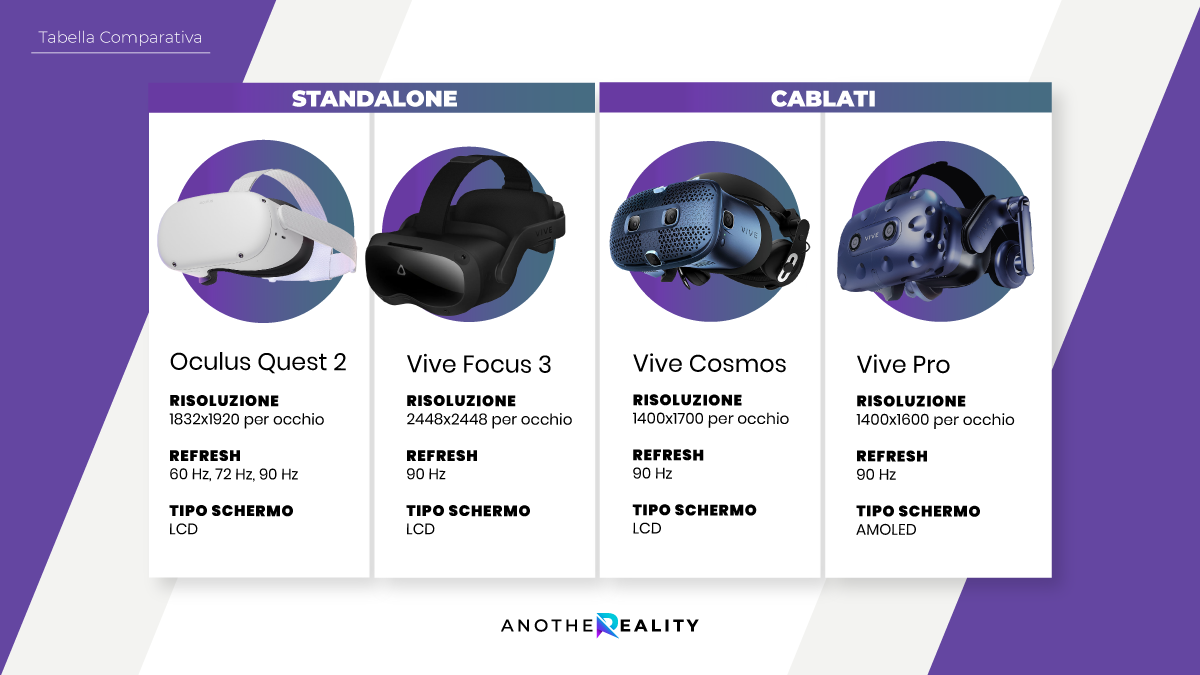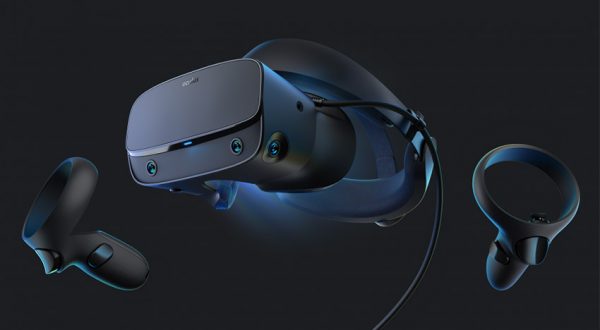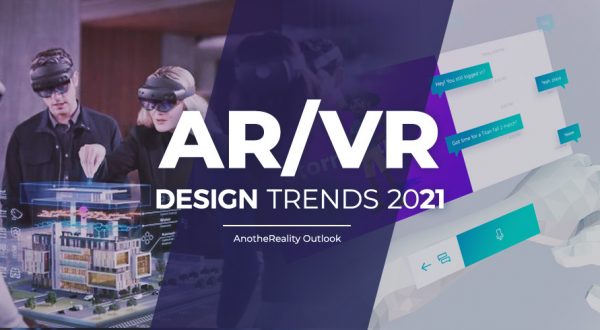VR headsets for virtual reality: where do we stand?
VR headsets for virtual reality have come a long way, especially in the last decade, transitioning from prototypes that captured people’s imagination despite their significant limitations, to truly usable products no longer dedicated only to a niche of enthusiasts who, in many ways, acted as pioneers.
Summary of Previous Episodes on VR Headsets
In reality, the first VR headsets were already introduced to the market in the mid-1990s, during the first major boom of VR technology. It was a time when offices and homes still used cathode-ray tube monitors, long before the LCD revolution, and computing power was significantly lower.
It was too early, in what the Hype Cycle model refers to as the “Technology Trigger” phase. As predicted by the model, interest quickly reached the “Peak of Inflated Expectations,” and shortly after, it deflated. Meanwhile, while the general public looked elsewhere, research progressed, and virtual worlds evolved from the pixelated appearance of the first Quake to the near photorealism of modern game engines. Interfaces took a backseat, and people preferred to focus on content, settling for the good old two-dimensional display.
The revival of interest in VR headsets was sparked by Palmer Luckey, a young American who had a simple yet brilliant idea: why not attach two small LCDs to a pair of glasses to create an ultra-affordable VR helmet? This idea led to a Kickstarter project—an independent crowdfunding platform—that also caught the attention of John Carmack, the brilliant developer behind Doom and Quake. The endorsement from the famous programmer further boosted the crowdfunding campaign and, most notably, attracted the attention of Mark Zuckerberg, who invested $2 billion to acquire Oculus, Palmer’s newly formed company.
A few years later, the first units of the Oculus DK (Development Kit) were launched on the market. Despite their limitations, with a resolution of 1280×800 and being an immature product, they revolutionized the industry. Everyone wanted one, even though it was essentially a prototype. The official launch of the commercial version took place in 2016, and today, 5 years later, that toy that sparked the VR revolution seems almost nostalgic compared to the models currently on the market. They may be few and quite expensive, but they are also much better, although still improvable.
VR Headsets: What Does the Market Offer?
As mentioned earlier, focusing on general-purpose headsets that are widespread and oriented towards the B2C/gaming market, Oculus is the company that revived interest in VR headsets and is now one of the major players in the market, thanks in part to being backed by Facebook, which is heavily investing in this technology. Facebook’s founder, Mark Zuckerberg, declared that his company will transform into a “metaverse company.”
The Oculus Quest 2 is an entry-level device for VR. It is relatively inexpensive (starting from 350 euros) and does not require a computer, functioning independently. It supports head movement tracking and does not require external sensors to detect the user’s position and gaze direction. It offers a resolution of 1832×1920 per eye, and its most intriguing aspect is that it is completely wireless, eliminating the need for bothersome cables. Currently, it is the only purchasable headset in the Oculus lineup, as even the PC-connected Rift S is no longer available for sale.
The main competitor to Oculus is VIVE, a company that initially targeted a more professional approach, appealing not only to gamers but also to artists, researchers, and designers. Unlike Oculus, VIVE has a relatively extensive product range with three product lines.
VIVE Focus 3 features 3K resolution AMOLED displays and includes everything necessary to function. It is powered by the Qualcomm Snapdragon 835 processor integrated within, which handles all processing and sensor management. It is the simplest solution to use within the VIVE ecosystem and is not intended for gamers but for enterprises. Use cases range from remote collaboration (a topic that has become particularly relevant due to the disruptions caused by Covid) to various simulations, such as machinery repairs and fire drills.
This headset is also completely wireless, making it ideal for those who prefer to move freely. It is widely adopted in entertainment centers that offer virtual reality gaming experiences. An optional accessory is available that captures facial expressions and enables features such as lip synchronization, enhancing the credibility of interactions among participants (or, more accurately, their avatars) in remote collaboration applications.
The Cosmos lineup of headsets requires a computer to operate and offers a lower cost and modular approach (expandable over time, reducing the initial investment), starting from $549.
Lastly, the VIVE Pro represents the top-of-the-line kit from the company and is highly appreciated by both enthusiasts and professionals. It boasts a resolution of 2880×1600, a wide field of view of 120 degrees, and extremely precise tracking, allowing users to move freely even within large rooms.
Valve Index, the VR kit by Valve, the developer behind Half-Life and its sequel, which has become the leading digital game store for PC and Mac with Steam, is a highly regarded player in the consumer market. Considering that gaming applications are the driving force behind the VR industry, it’s no surprise that Valve embarked on this adventure. Unfortunately, unlike the VIVE products, this headset is not designed for professional use, despite its excellent technical specifications.
For more business-oriented applications, the market offers additional solutions, including Pico Neo 3 Pro, Varjo, XTAL, Pimax, and HP Reverb, which will be explored in a future post.

Virtual Reality Headsets: What to Expect in the Next 3 Months?
After looking at what is currently available, it is natural to wonder what the near future holds. By the end of the year, the HTC VIVE Pro 2 will finally be available, which is a virtual reality system designed for professionals and was announced on September 14. The kit aims to be a top-of-the-line product, boasting a resolution of 2448×2448 pixels per eye, a significant improvement compared to its previous version, which was limited to 2880 x 1600. The FOV (field of view) has been expanded to 120 degrees, and the refresh rate is 120 Hz, ensuring even smoother visuals. However, the display is no longer AMOLED but a more traditional LCD, which may result in less vibrant colors.
Facebook is also ready to update its technology, and some fortunate individuals have already obtained prototypes of the Oculus Quest 2 Pro, which is expected to be launched in 2022. Unfortunately, there is still no concrete information available about its technical specifications.
The Kickstarter campaign for LYNX, an innovative all-in-one Mixed Reality solution, is about to start very soon. It is a device capable of handling both virtual and augmented reality applications, based on the Qualcomm XR2 processor and compatible with SteamVR. It will feature two LCD screens with a resolution of 1600×1600 and a refresh rate of 90 Hz. It will also have two black-and-white cameras to track the user’s position and two infrared cameras to detect the user’s hand movements. The connectivity will be based on the new Wi-Fi 6 standard.
There has been talking for some time about Apple entering the world of virtual or augmented reality, and many were expecting more information during the product presentation held in September. However, once again, Tim Cook chose to keep the details about these technologies under wraps.
Which headset to choose?
It is difficult to rank the “best” headsets as technical specifications are important, but the ecosystem is equally significant. Depending on the intended use, one may be more suitable than another.
For consumer users, particularly casual gamers, the most suitable choice is the Oculus Quest 2, which not only enjoys great support but is also the most affordable option, costing only 349 euros, less than a high-quality gaming monitor.
The VIVE Cosmos lineup of headsets positions itself a step higher and can be considered an entry-level product for VR gaming for hardcore gamers, who are more experienced players (as opposed to casual gamers who may find Oculus more suitable).
The VIVE Pro 2 is one of the most advanced solutions, as evident from its price (starting at 999 euros for the headset alone, while the full kit starts at around 1,600 euros). It is also ideal for business applications due to its technical quality (currently the only one with 5K resolution) and the tailored support and warranty designed for professionals and companies.
Finally, the VIVE Focus is specifically designed for business users in sectors such as art, design, research, collaboration, and even education. Being a stand-alone solution that does not require a computer, base stations, or sensors, it is easy to set up in productive environments and use. It is practically a plug-and-play product, perfect for introducing employees and partners to the world of VR, hiding all the technological complexities from the user.


